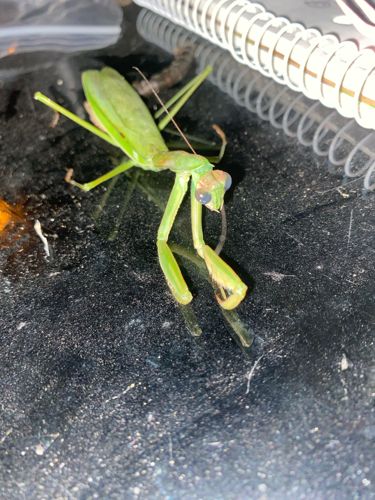Praying Mantis
Scientific Name: Mantis religiosa
Order & Family: Order: Mantodea, Family: Mantidae
Size: Males usually range from 5-7 cm (2-2.8 inches), while females can be larger, ranging from 6-9 cm (2.4-3.5 inches).

Natural Habitat
Typically found in diverse habitats including gardens, meadows, grasslands, and areas with tall vegetation, shrubs, and trees. They prefer warm, temperate, and tropical regions.
Diet & Feeding
Strictly carnivorous predators, they primarily feed on other insects such as flies, crickets, moths, butterflies, and grasshoppers. Larger mantises may occasionally prey on small vertebrates like lizards, frogs, or hummingbirds.
Behavior Patterns
Praying mantises are ambush predators, known for their distinctive upright posture with their forelegs folded as if in prayer. They are masters of camouflage, blending seamlessly into their environment to stalk or wait for prey. They are solitary creatures, and females are known for sometimes consuming the male after mating (sexual cannibalism). They have excellent eyesight and can turn their heads almost 180 degrees.
Risks & Benefits
Praying mantises pose no risk to humans; they are not venomous and do not bite unless provoked. They are highly beneficial insects in gardens and agricultural settings as they help control populations of various pest insects, making them valuable biological control agents.
Identified on: 9/13/2025